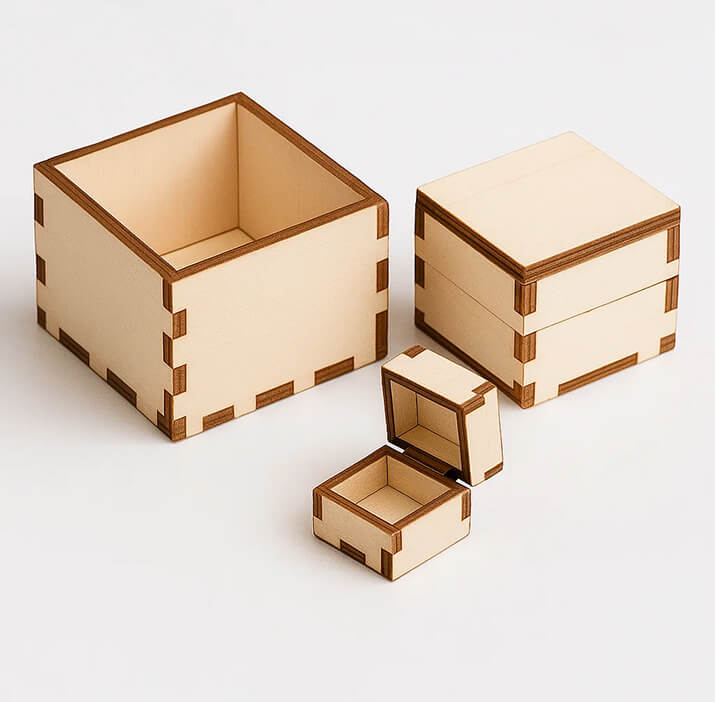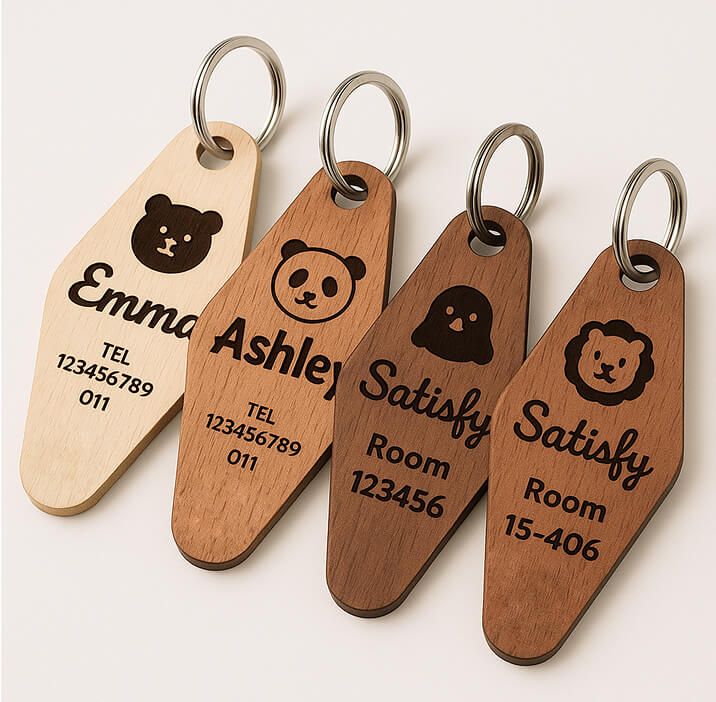![[Laser cut and engrave] Team bag tag swag](https://image-res.xtool.com/ali-res/community/making/3c335407-6cea-4e7a-a654-3fbddcd67699/IMG_5036.jpeg?x-oss-process=image/resize,w_1200,h_900,limit_0/interlace,1/format,webp/auto-orient,1)
Team bag tag swag
Information
I met up with the consulting team I work with last weekend, so I created a bunch of bag tags to share with the team. This was an easy project to create, a long project to process, and a good amount of work to finish. I probably spent a good hour or two sanding, cleaning, assembling, and packaging these.
Instruction
Step1: Create design file
This project will walk you through the process of creating a bunch of bag tags. For my project, I started with a rounded rectangle. I used my caliper to measure the width of the connector clips I purchased for such projects. That is 4mm, so I added a 4mm hole in the top left corner. Then I added the company logo and turned it 45°. While it was technically centered in the space, I needed to optically center it—meaning adjust the positioning so it looks centered rather than actually being centered. If you work with unusually shaped logos, you may already be familiar with this concept.
Once complete, use the matrix feature to duplicate the full design as many times as you need or will fit on your material. I just wanted to make a dozen.
To make processing the job easier, I (always) recommend separating the cut and engraved objects into different layers.
Since my project was for a specific company, I've made and uploaded a generic copy of the design file I created. You can select the engraving layer and remove the placeholders to substitute your own logo. Just remember to use that matrix feature—it will save you a lot of time!
Step2: Set up and process the job
While I typically run my own tests on new materials, I've come to learn that xTool's recommended settings for materials are pretty spot on. For the Cut layer, I added a 4th pass to the processing. The reference setting is three passes. I found that the edges were still a little sharp using that setting, though, so I hoped to burn off a little more of the edges with an additional pass.
For the engraving, my test runs showed that upping the lines per centimeter produced a brighter image, so I adjusted the reference lpcm of 100 to 200.
I suggest selecting xTool's material setting for your material as a starting point, then auto-measuring your material and tweaking the process settings accordingly. For me, that was their orange acrylic setting.
Secure the material so it doesn't move around while processing, then frame and process.
Since these are bag tags that will likely flop around a bit where they're hanging, you'll also want to engrave the back side. When the job is complete, carefully remove each tag and flip it over, keeping the connector hole in the top left corner. Frame the job again to make sure nothing moved around, then set the cut layer to Ignore.
If you want the same design on the flip side, you can process the job again now.
But you could also put something else on the back side. You could personalize them, add the company name, or get creative with anything.
The second time the job runs, I end up interrupting the job periodically to pull completed tags from the machine. I knew I needed to do some final finishing, and this saved me time. If you have an open engraver that doesn't stop automatically by opening the top, ALWAYS interrupt/pause the job from your engraving software before you put your hand in the work area. I waited for one row to finish engraving, then I'd pause the job as the laser was repositioning to the next.
Step3: Finish and assemble each tag
The M1 doesn't cut orange acrylic anywhere near as cleanly as it does black acrylic. So the edges of my tags came out rough and jaggedy. I used a 320-grit sand disc on my sander to sand down and smooth the edges and rounded corners. This took a lot of time. And sanding acrylic isn't great for your lungs, so I wore a mask the entire time, making the job a bit more…tedious.
After sanding, wipe down the final tag with a soft cloth. Rub your fingers carefully around the sides to ensure it's smooth and there are no sharp edges.
Clean the tag with isopropyl alcohol. I find that alcohol wipes work perfectly for jobs like this.
To finish each tag, add a key ring or hook. I used swivel hooks with snapping connectors to give my project a professional, completed feel.
Learnings
While the M1 can cut color acrylics, the results are far from perfect. The additional finishing required to create a smooth, safe edge took a lot of time and effort.
This kind of project won't scale well with an M1. Maybe someday I'll upgrade to a more powerful device to make this quicker and easier, but for now I'll likely stick to smaller batch projects.




